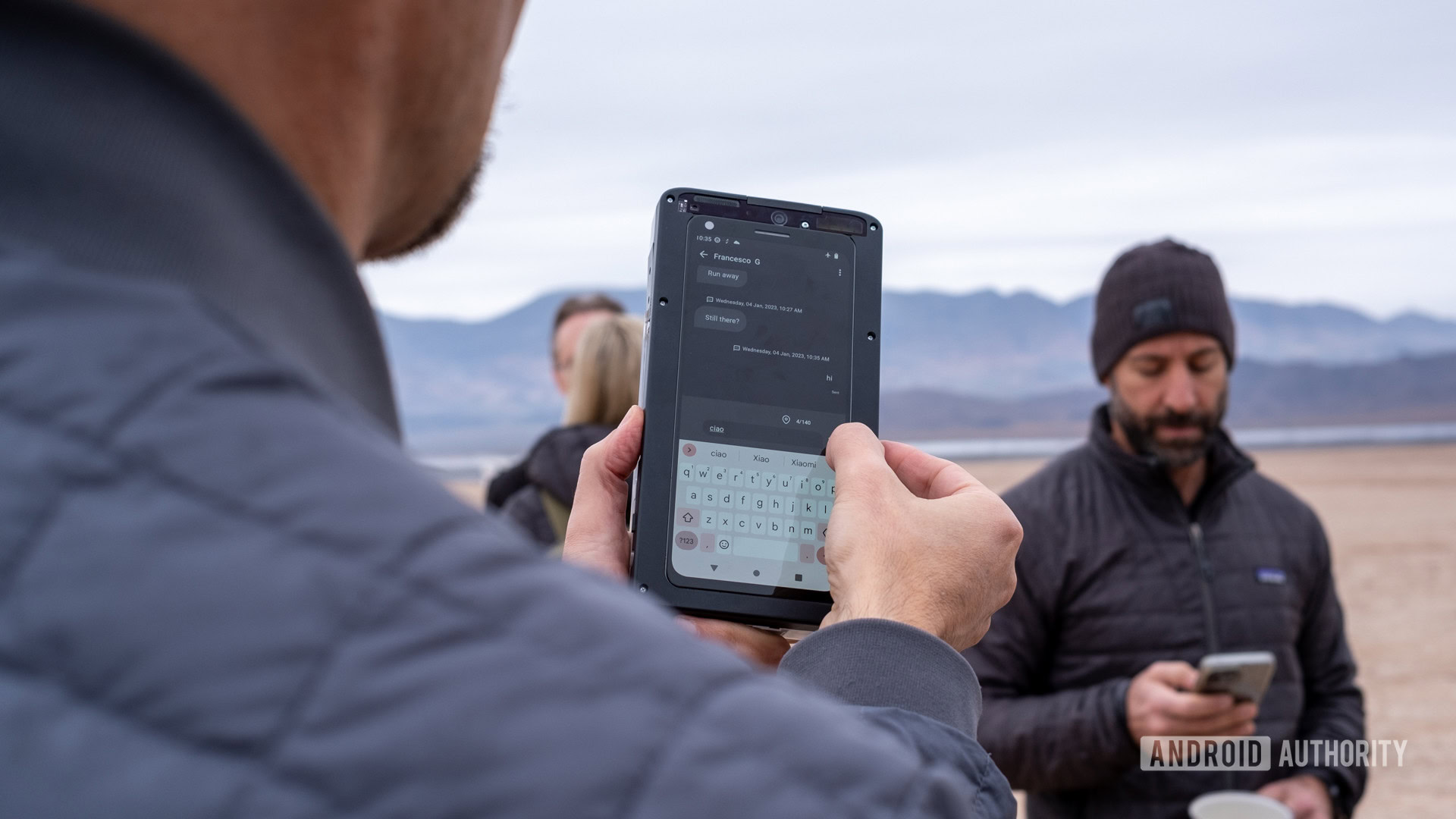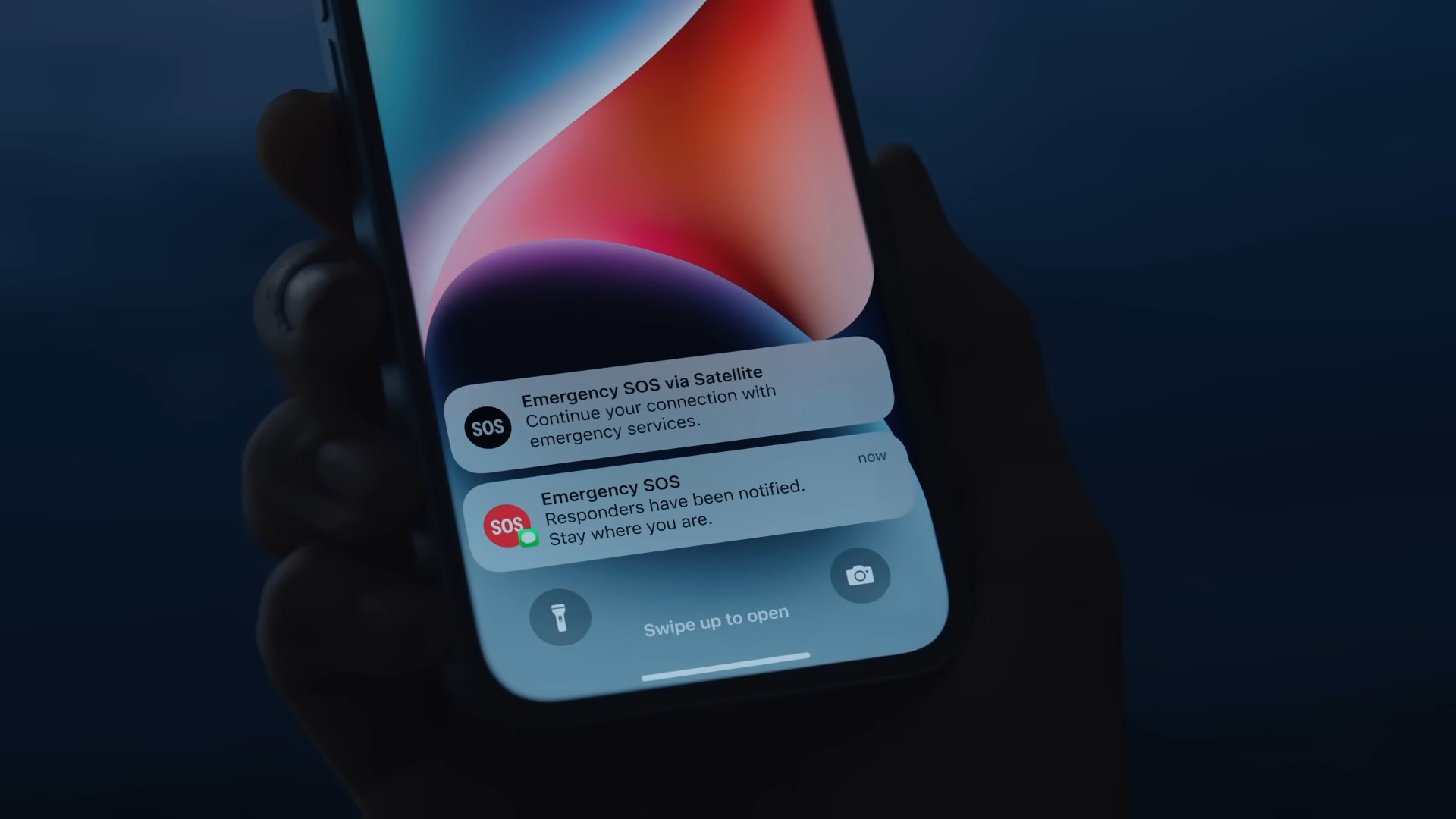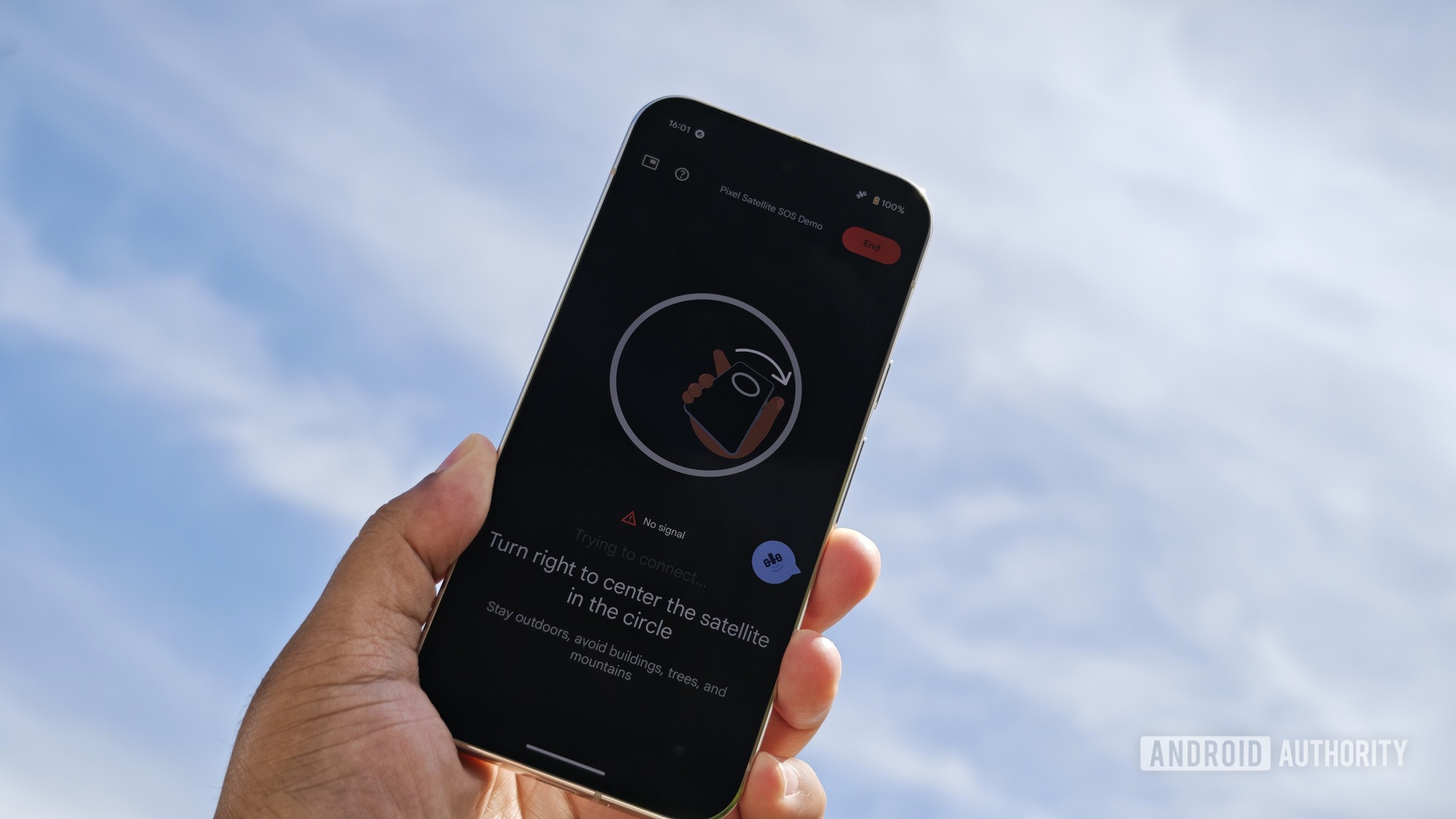Andrew Grush / Android Authority
Starlink has truly opened our eyes to the power of satellite technology, delivering speeds that rival cable internet in areas previously lacking high-speed options. But Starlink isn’t just about traditional internet use. Earlier this year, T-Mobile and Starlink introduced emergency satellite-to-cell features, including full texting, to mobile phone users for the first time. More recently, Verizon and some of its MVNOs followed suit with a more limited satellite-to-cell service launch for Pixel 9 and Galaxy S25 users, in cooperation with Skylo.
As satellite providers increasingly team up with major carriers, you might wonder: Will satellite technology ever surpass traditional services from big providers? It’s a compelling thought, but the reality is more complicated.
Let’s take a closer look at the major players in the satellite-to-cell space, what they currently offer, and their publicly announced future plans. We’ll also explore the roadblocks holding satellite technology back in the mobile world and whether these issues might eventually become a thing of the past.
Would you ever replace traditional cellular service with satellite?
2 votes
There are just a few key players, for now
Although numerous companies are involved in satellite technology, only a handful have directly pursued satellite-to-cell capabilities so far. Recently, Starlink has emerged as the most widely available service, even though its features remain in public beta. Nevertheless, several other companies have significant plans for satellite-to-cell technologies in the future.
Starlink currently offers Direct-to-Cell in beta via partnerships

Aamir Siddiqui / Android Authority
Starlink is best known for its internet service, but it has also become the biggest satellite-to-cell provider as it offers this service indirectly through partnerships, such as with T-Mobile in the US. The great thing about this partnership is that T-Mobile isn’t keeping satellite features exclusive, as it has allowed subscribers from rival networks to use the feature for free during beta.
- Who is it available for? Initially meant for T-Mobile subscribers, Starlink Direct to Cell is also available as an optional add-on for customers of rival networks.
- How does the service work? Starlink’s next-gen low-orbit satellites mimic signals from conventional cellular towers, allowing standard phones to connect without special hardware beyond the required LTE standards.
- What can you do with the service? Currently, you can send and receive texts. Plans to include photos, voice calls, and data are scheduled post-beta.
- How much will it cost? The beta is free for now. Post-beta, it will be free only for Go5G Next subscribers. T-Mobile subscribers with an Early Adopter Account will pay $10/month, while rival network users will pay $20/month.
- Plans for a standalone option outside T-Mobile? Not publicly. However, the service will expand internationally through partnerships with carriers like Opus in Australia and Rogers in Canada.
Skylo offers Emergency SOS features to partners like Verizon

Edgar Cervantes / Android Authority
Skylo provides satellite connectivity across various industries through partnerships as opposed to having its own network. While it’s far from a major player in the satellite-to-cell game right now, Skylo most notably powers Verizon’s emergency SOS features on specific devices and is working with other cellular companies and phone makers to expand emergency SOS features.
- Who is it available for? Skylo currently supports emergency SOS on Pixel 9 on all networks, as well as the Galaxy S25 through Verizon.
- How does the service work? Skylo uses specialized hardware inside smartphones to communicate via satellites from companies like Viasat, Ligado Networks, and TerreStar. Unlike most of the others on this list, that means it doesn’t exclusively use low-orbit satellites, which provide arguably the best service.
- What can you do with the service? Primarily emergency SOS for its hardware partners, but there is text messaging through Verizon when a cellular signal is unavailable.
- How much will it cost? Verizon includes this feature for free with all postpaid plans.
- Plans for a standalone option? Skylo focuses on partnerships rather than direct consumer subscriptions, with no standalone service planned.
AST SpaceMobile has big ambitions, but a long road ahead
AST SpaceMobile aims to establish its own low-earth orbit satellite-to-cell network similar to Starlink, but it is still in early development. Unlike Starlink, which has over 7,000 satellites (approximately 400 equipped for cellular service), AST SpaceMobile has only launched five satellites capable of satellite-to-cell connectivity features.
- Who is it available for? Currently unavailable commercially. AT&T, Verizon, and other international carriers have participated in tests, but the service is still developing.
- How does the service work? Like Starlink, AST SpaceMobile will provide satellite-to-cellular connectivity without specialized phones.
- What can you do with the service? AST is initially expected to offer texting and emergency SOS, with eventual support for data and voice.
- How much will it cost? Pricing and plans are currently unknown.
- Plans for a standalone option? AST’s efforts are likely to remain partner-based rather than standalone at least into the foreseeable future.
Iridium provides specialized satellite connectivity but is expanding its partnerships

Ryan Haines / Android Authority
Iridium is known primarily for traditional satellite phone services, typically requiring specialized equipment for remote or field use. Currently, it offers the Iridium Go hotspot as a standalone device providing limited satellite-to-cell features, though at very slow speeds that are not suitable as a true cellular service replacement. For what it’s worth, we’ve seen other devices like the Go, including the HMD OffGrid. The big difference is that Iridium controls its own network.
Iridium briefly partnered with Qualcomm to develop satellite-to-cell capabilities; however, after this partnership fell through, it shifted its attention toward other future collaborations.
- Who is it available for? Currently, using Iridium’s network requires either a dedicated satellite phone or the Iridium Go hotspot, which can connect to a regular smartphone. This is expected to change as Iridium expands its satellite-to-cell offerings through partnerships via its Project Stardust program.
- How does the service work? Iridium uses its low-earth orbit satellite network, which currently requires specialized hardware not typically integrated into standard smartphones.
- How much will it cost? Pricing details have not yet been announced, and it is too early to speculate.
- What will you be able to do with the service? Initially, emergency SOS and basic texting features are likely, potentially expanding later to slow-speed basic data and voice calling. This will resemble the current capabilities offered by Iridium Go.
- Plans for a standalone option? Technically, Iridium offers this through Iridium Go, so while there are no official plans to directly bring services like this to smartphone customers, it may not be out of the realm of possibility, at least eventually.
Globalstar powers the iPhone’s emergency SOS features

Globalstar is another major traditional satellite phone provider. While it continues to primarily focus on traditional satellite customers, it is actively pursuing the expanding satellite-to-cell market, notably through its partnership with Apple. To that end, Apple has invested over $1 billion in Globalstar to support satellite-to-cell features like emergency texting on iPhone 14 and newer devices. Likely, Globalstar will eventually extend its efforts to other manufacturers as well.
- Who is it available for? Mainly traditional satellite customers, with emergency SOS available for iPhone users through the Apple partnership.
- How does the service work? Globalstar has its own low-orbit network, requiring specialized hardware built into devices like iPhones. The company plans to aggressively expand its low-orbit network in the future with plans for next-gen satellites that better support satellite-to-cell connectivity.
- What can you do with the service? It’s currently limited to emergency SOS on supported iPhones.
- How much will it cost? It is free for two years on supported iPhones, pricing thereafter not yet announced.
- Plans for a standalone cell-to-satellite option? Currently, there are no official plans. Globalstar remains focused primarily on specialized satellite phone services.
Viasat has a direct-to-device satellite system in the works
In addition to already working with Skylo, ViaSat also plans to work with it and other partners on its own constellation of low-orbit satellites that will be designed to connect directly to smartphones and IoT devices without requiring ground infrastructure. This system was successfully tested last year through Skylo in the United Arab Emirates, India, and Saudi Arabia, and so it’s only a matter of time before the company ramps up the effort.
- Who is it available for? For now, Viasat doesn’t have satellite-to-phone services beyond its partnership with Skylo, but eventually the company plans to push this technology to more partners.
- How does the service work? Viasat primarily relies on its traditional satellite system, but it is working to grow its low-Earth orbit satellite network as well.
- What can you do with the service? In addition to satellite SOS features, it is expected that ViaSat’s network will eventually be capable of providing calls, texts, and even data to cellular subscribers in an area with no cellular coverage on the ground.
- How much will it cost? It’s too early to talk pricing here, though judging by other similar efforts that have launched, it is likely it will at least be free initially for basic emergency SOS use.
- Plans for a standalone cell-to-satellite option? ViaSat has mostly been approaching this as a partnership with carriers and manufacturers, but it’s certainly possible it could also extend its satellite-to-cell features to its existing satellite internet subscribers in the future.
HughesNet already has SatCel Connect, but it’s not for you
While HughesNet doesn’t seem to be pursuing satellite-to-cell partnerships with carriers or manufacturers in any major way just yet, that doesn’t mean it isn’t involved at all. HughesNet currently offers its SatCell Connect service for first responders and field use.
- Who is it available for? SatCell Connect isn’t for individuals and is instead designed for emergency response times and other similar field use scenarios.
- How does the service work? SatCell Connect has a special dish that can be brought to response sites that allows standard phones to connect to it remotely as long as they are within range.
- What can you do with the service? Emergency response workers can use their smartphones for calling, texting, and streaming video in order to coordinate their activities.
- How much will it cost? Since this isn’t designed for individuals, those details aren’t public and likely vary depending on the agreements made with HughesNet.
- Plans for a standalone cell-to-satellite option? At least as far as I could dig up, no, there doesn’t seem to be any plans.
What are the biggest roadblocks holding satellite back right now?

Mishaal Rahman / Android Authority
As you can see, there are plenty of efforts underway to roll out satellite-to-cell technology. For the most part, partnerships remain the favored approach. Given the current trajectory, it’s unlikely that satellite technology will replace terrestrial cellular service anytime soon, if ever. One major reason is that satellite technology often faces larger regulatory hurdles than the cellular industry.
This is especially true for low-Earth orbit (LEO) satellites. LEO constellations are crucial because they are the only type even theoretically capable of replacing terrestrial service. Traditional satellites suffer from latency and speed limitations that make such a replacement effort impractical.
Even if we move past regulatory and technical challenges, there are several inherent advantages to traditional cellular service that are difficult to overcome:
- Higher capacity: Terrestrial networks support significantly more traffic than satellite networks and rely on more robust infrastructure.
- Lower latency: Especially when compared to traditional satellites, ground-based systems offer much faster response times.
- Lower costs: Building and maintaining wireless towers is cheaper and more straightforward than deploying and maintaining satellites.
- Environmental concerns: Low-orbit satellite networks can degrade the quality of the night sky for astronomers and increase the risk of orbital collisions.
To be fair, Starlink’s latency isn’t that much worse than that of broadband (at least compared to regular sat), which suggests latency could become a non-issue over time. But capacity remains a major obstacle and solving it would likely require blanketing the sky with billions of satellites. That’s not just expensive, it’s also a future filled with space junk. And although satellite deployment costs may drop over time, land-based infrastructure will almost always be the more economical option.
Satellite doesn’t need to replace terrestrial mobile service, nor should it
The truth is, satellite providers don’t want to replace traditional cellular service, and you shouldn’t want that either. The ideal model is a hybrid approach, where carriers provide both ground and satellite coverage. While it’s possible that some carriers may eventually develop their own satellite networks, the infrastructure investment would be massive and likely not worth the cost.
From a consumer perspective, there’s no real advantage to satellite-only service either. Let’s be honest: most people don’t care (or even want to know) how their phone connects, as long as it works. In the future, satellite backup will likely become so seamless and integrated that you won’t be able to tell whether you’re connected to a ground tower or a satellite, aside from maybe a latency spike or a small indicator on your phone.
And that’s the beauty of it: the ability to connect from anywhere. That’s far more appealing than a future reliant on just satellites or towers.


